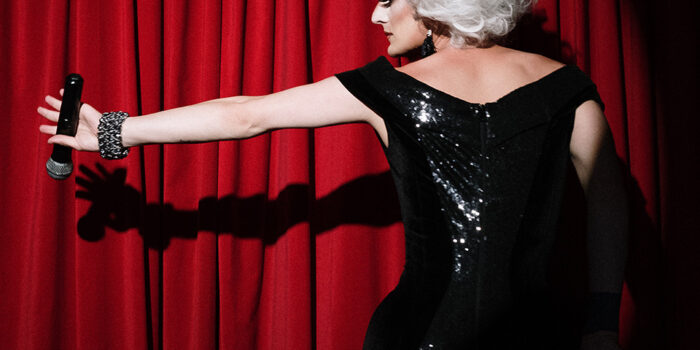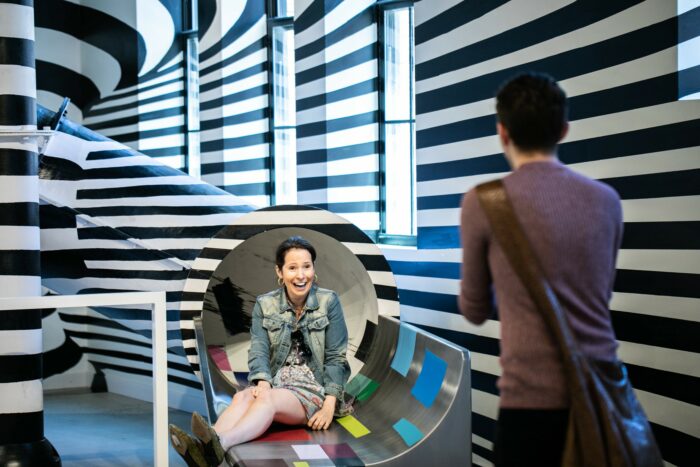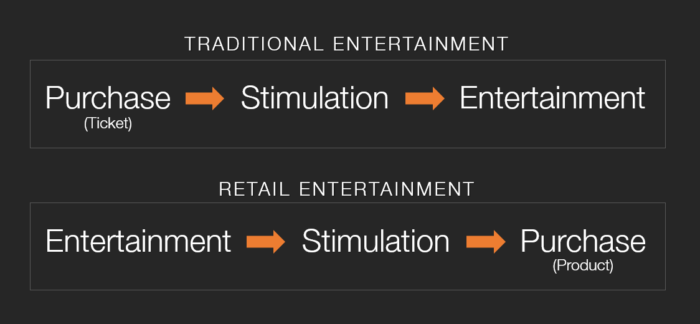
Have we moved past Experiential Retail and come full circle to one of the oldest industries in the world?
It’s old news: Retail is changing and everyone is now trying to make their store more experiential. Some really pulled it off and are truly worth a visit such as Showfields, also described as the “Sleep No More” of stores. Shoppers are being engaged and can dive deep into the store and individually explore it while being fed stories by the in-store staff that seems to be more like actors in character than salespeople.
On the other hand, you can easily find stores that tried to create additional value by setting up an incoherent string of Instagram backdrops completely irrelevant to the product they are selling, all the while hoping that the photos will go viral.
Whichever end of the spectrum we are looking at, whether successful or not, the question we are asking ourselves in 2020 is: Is “experiential” a thing of the past decade? Is it perhaps time to find a better and more appropriate word to describe what retail should be all about now?
The word “experience” can describe any kind of event that has happened – be it positive, negative or even completely neutral without an actual effect on a person. So considering that an experience might not be all that impactful or valuable, should retail strive to offer more than that?

Looking at successful examples of the latest retail pop-ups, at how they are described and which elements their success is mostly attributed to, we have found a clue as to what might serve as a better word to describe the next big thing in retail. In fact, it seems as though we have come full circle to one of the oldest industries in the world: Entertainment.
Entertainment in reverse
If you break it down, the concept of entertainment is quite simple: First, you make a purchase (which would be the ticket), then you go see a show or movie, and hopefully, you will enjoy it or learn something new. Applying this proposition to innovative and successful retail concepts, you could describe them somewhat as entertainment in reverse: First, you go to a retail space (intentionally not calling them “stores” – continue to read to find out why), then you learn something or get entertained by the engaging displays and the stories that are told, and in the end, if what was offered convinced you, you might end up making a purchase which, in this case, would be a product.

The goal of entertainment has always been to show people something they haven’t seen before and to bring a sense of awe and wonder – like gladiator showdowns did in ancient Rome or breathtaking acrobatic acts do at Cirque Du Soleil. This notion of surprise and delight would be at the heart of Retail Entertainment and can help lure potential customers in by offering them something unexpected and inspiring.
Considering the digitized world we are living in, Retail Entertainment seems even more likely to be a perfectly fitting term. Nowadays, the majority of everyday stimuli comes from the same single screen we look at, be it our phone or our laptop at work. This monotony in digital stimuli makes people crave real sensory stimulation which Retail Entertainment could provide.
Naturally, like with other entertainment formats such as movies or shows, Retail Entertainment can yield different levels of emotional stimulation. Some retail spaces might want to entertain on a superficial level and simply make you laugh. Others might want to go deeper, make people think and inspire their audiences to explore complex ideas. Yet, in either case, the goal is to create an emotional response that adds value beyond the transactional process. Physically going to a retail space then becomes worth the trip because the reward is not only the purchase made there, but moments of true multi-sensory stimulation.
The act of going to retail spaces transcends being an errand and has the potential to become a social activity.
Let’s take this one step further and into the context of Omni Retail: As customers can also make the purchase online most of the time, the actual sale on site is no longer required. This has three consequences.
First, the word “store” might be too limiting to describe this new kind of retail space. An alternative term could be “show room” as it speaks to the exhibiting and art-mimicking character of Retail Entertainment.
Second, with the actual sale taken out of the equation, money is no longer the prevailing currency. If entertainment becomes the goal, social currency is what counts. And that can come in the form of a good review, photos that are shared, or simply word of mouth.
Last but not least, shopping or the act of going to retail spaces transcends being an errand and has the potential to become a social activity. This point is especially interesting considering today’s general lack of time. Everybody’s calendar is busy with work, household errands and mandatory appointments and people are very conscious about how they spend their time off. So if customers can go to a retail space and be entertained by a multidimensional offering that can be explored and experienced in a way an online shop could never be – that is when it is worth for them to go… and to come back again.
Context and plot twists
The obvious question left to answer is: How can a retail space become entertaining? Here again, we can reference the actual entertainment industry. Stories make movies. Stories can also make retail spaces. Multi-faceted and relevant stories make products more than just products. They give them context and a whole other dimension, thereby turning them into meaningful cultural artifacts the same way they turn movies into a part of culture. Mix that with an unexpected plot twist that no one saw coming and you have yourself a potential box office winner.
Bringing this back to our example from the beginning, Showfields successfully implemented the idea of Retail Entertainment in their space by telling engaging stories in a surprising and multi-sensory way. The result: Some brands have reported sales increases of over 50 percent and access to new audiences.
We definitely see potential for Retail Entertainment to become the latest buzz word in the discussions about the industry. Stores will become stages and show rooms in the truest sense where a product is not only displayed, but where its story is portrayed in visually appealing and engaging ways. And if the viewers like what they see, they will tell their friends about it – just like they would do with a great show they just saw.
